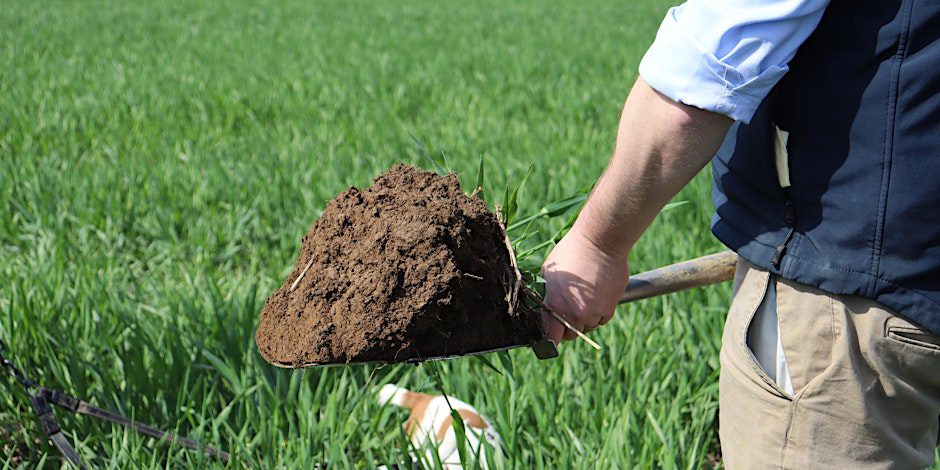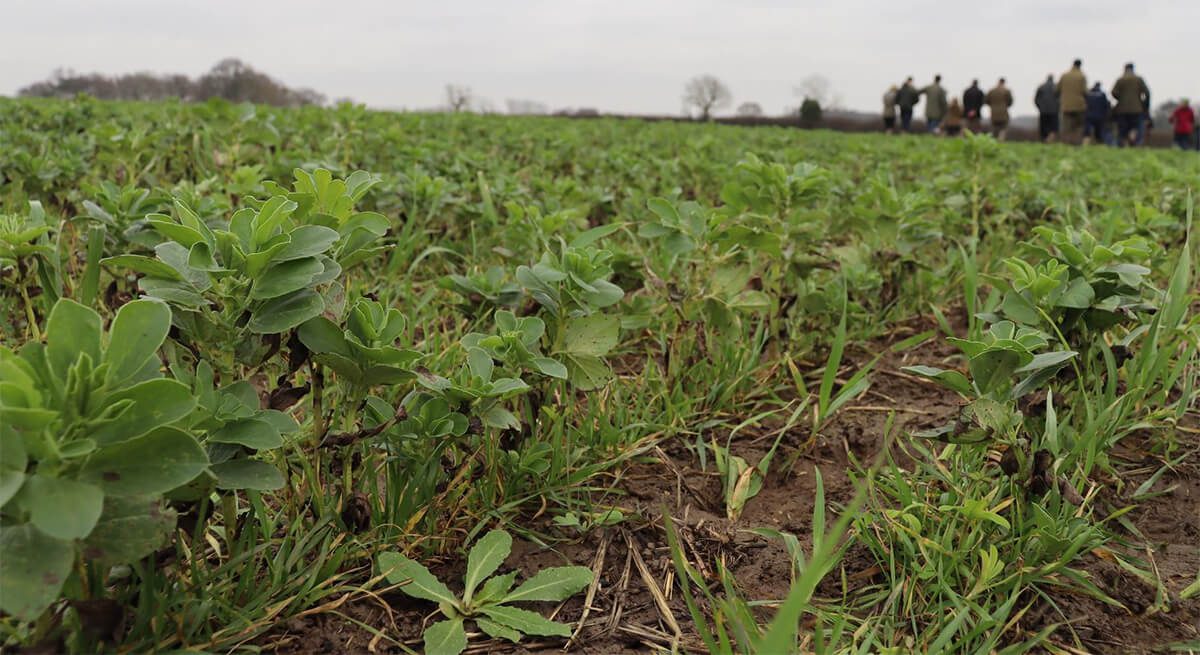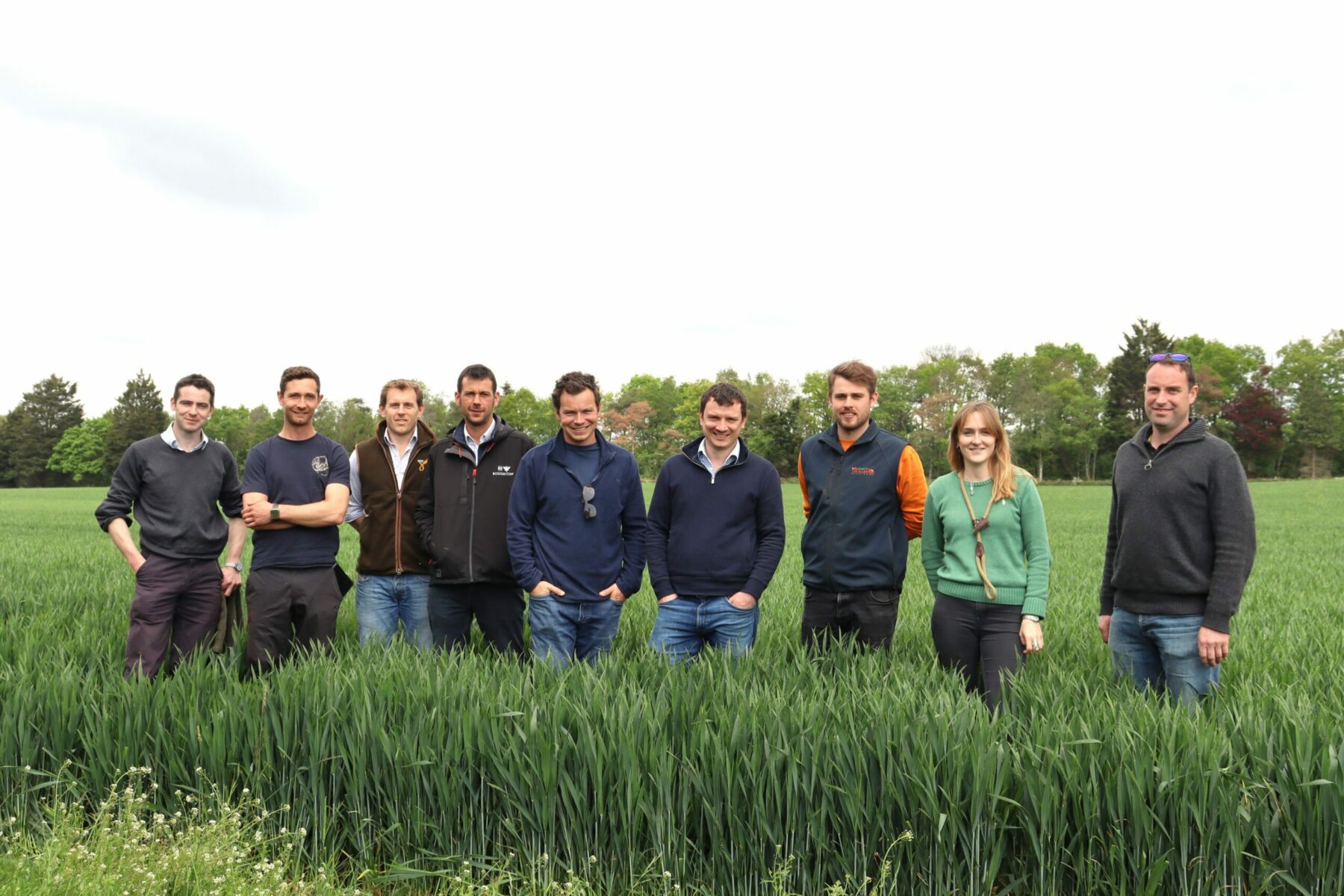Capturing Nutrients
Leaving land either cultivated or fallow over the winter with little weed growth can lead to high levels of nitrate leaching, as well as the loss of other nutrients. Amazingly, cover crops can reduce the loss of nitrates to 0 when established early, but on average there is likely to be around a 60% reduction in nitrate leaching which is still significant (Baxter et al., 2023). Multi-year research at Teagasc has proven that a mustard cover crop reduced mean soil solution nitrate concentrations by over 70% compared to no cover, under both reduced tillage and conventional ploughing (Collins, 2023). Cover crops will scavenge Nitrogen and other nutrients from the soil and air, making them more easily available to the following crop (Greenland Seeds Ltd, 2024). This is often referred to as ‘nutrient mining’; where species with deep roots are used to access nutrients lower down in the soil profile and bring them to the surface (Farming for a better climate, 2024). This technique can be particularly effective in boosting levels of a range of trace elements.
Improving Soil Structre
Cover crops are also a useful tool to build stable aggregates to improve soil structure and increase soil organic matter and soil carbon to feed the soil biology (Farm Carbon Toolkit, 2023). A plant’s rooting system is the key to soil structure. With cover crops, the root structure can differ depending on the species chosen – this should be taken into account when assessing the soil. Typically, a mixture will include species with different types of rooting such as lateral, fibrous and taproot structures so that different soil profiles can be targeted, which helps to alleviate compaction (Baxter et al., 2023). Deeper rooting species will aid in breaking up the soil and improve porosity, leading to better water infiltration alongside nutrient and gaseous exchange (Farm Carbon Toolkit, 2023).
Increasing Organic Matter
A cover crop’s ability to capture nutrients as it grows means they create important plant material. This is then returned into the soils following their destruction and as it begins to decompose, the nutrients are returned to the soil as organic matter (Baxter et al., 2023). Putting organic matter back in the soil improves the structure and mineral composition. It aids soil aeration, helping to reduce water-logging, and locks in nitrogen, making it available to the following crops (Greenland Seeds Ltd, 2024).
Reducing Soil Erosion
Cover crops are also able to stabilise the soil and provide a literal cover from rainfall. This reduces soil surface ‘capping’, leading to the prevention of soil erosion and run-off both of sediment and nutrients (Baxter et al., 2023). Planting a good cover crop over the winter months also protects the soil from erosion by wind and ice. Wind blow or field runoff can take particles of insoluble substances such as soil organic matter and phosphorus out of fields, contributing to diffuse pollution (Farming for a better climate, 2024).
Reduction In Costs / Improvement In Yield
The majority of crops established following a cover crop will show an increase in yield, highlighting the financial benefits of investing time and money into using cover crops. In some cases, you may not see an immediate yield increase, however, as the rotation continues with cover crops included there should be an increase in production (Greenland Seeds Ltd, 2024). While there is a cost to establishing cover crops, there are opportunities for this to be recouped if they can be grazed by livestock, which is also an excellent way to recycle nutrients back into the soil (Collins, 2023). Incorporating leguminous plants, such as clover, will fix nitrogen levels, reducing dependency on artificial fertiliser for subsequent crops (Farm Carbon Toolkit, 2024).
Pest And Predation Control
Maintaining ground cover and persistence of living roots in the soil can also reduce competition from pests (Farm Carbon Toolkit, 2023). Certain species of cover crops can even be selected to control the lifecycle of predators. For example, in a Farmer’s Weekly case study, a farmer described his strategy for controlling the population of free-living nematodes that were destroying his vegetables and sugar beet. In this case, a specific oil radish was used that stimulated the hatching of nematode eggs whilst simultaneously providing hostile conditions for their growth, causing slowing and ultimate cessation of nematode reproduction (Farm Carbon Toolkit, 2023). Cover crops also cause the number of earthworms in the soil to increase, which helps prepare seedbeds and reduce disease organisms (DEFRA, 2024).
Weed Reduction
Cover crops work by depriving weeds of nutrients and light, causing them to die off, which avoids exhausting the seed bank. This depends on selecting a cover species that grows vigorously when the target weeds are also growing (Farming for a better climate, 2024). Some species have an Allelopathic effect on weeds, these act as germination and growth inhibitors, e.g., Black Oats are effective against broad leaved weeds (Greenland Seeds ltd, 2024). It is good practice to sow multiple species in any one field to optimise competition and gain maximum benefit. This can be especially good for controlling persistent weeds (Farm Carbon Toolkit, 2023).
Other Benefits
Diversity in cropping is often mooted as a key method to improve soil health and productivity and incorporating cover crops is a fantastic way to introduce much needed diversity into the arable rotation. The idea is that a diverse mix of crops will bring along a diverse mix of rooting types, structures and lengths. Each root will support an array of bacteria and fungi with different apparatus to cycle the nutrients whilst extending and expanding the root network. Above-ground you are also providing a mosaic of solar panels of all different shapes and sizes, keeping the soil covered and maximising the surface area for photosynthesis, utilising the sun’s energy and pumping carbon back into the soil (Farm Carbon Toolkit, 2023). All cover crops therefore help to improve biodiversity on the farm. As well as helping to improve the activity of microbes in the soil, they provide important habitat for many different species above ground (Farming for a better climate, 2024).
References
- The benefits of cover crops – much more than just soil health. Lexie Baxter, Jim Egan and Rob Nightingale (2023) The benefits of cover crops – much more than just soil health – Frontier Blog – Frontier Agriculture
- The multiple benefits of catch crops. Ciaran Collins (2023) Crops – The multiple benefits of catch crops – Teagasc | Agriculture and Food Development Authority
- The benefits of cover crops. Greenland Seeds Ltd (2024) The Benefits of Cover Crops | Greenland Seeds
- Use of cover crops – practical guide. Farming for a better climate (2024) fas.scot/downloads/practical-guide-use-of-cover-crops/
- A guide to cover crops. Farm Carbon Toolkit (2023) A Guide to Cover Crops – Farm Carbon Toolkit
- Use cover crops or green manure. DEFRA (2024) Use cover crops or green manure – Farming (blog.gov.uk)





